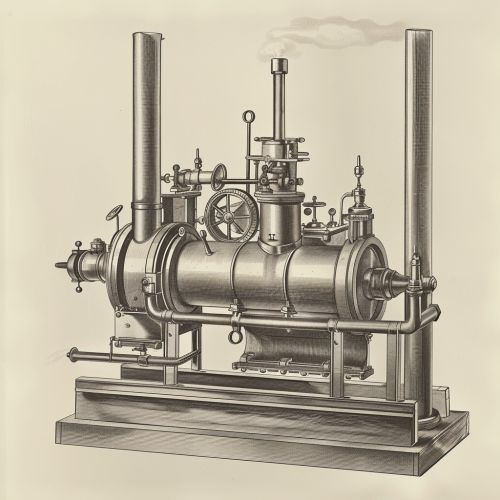History of the steam engine
History of the Steam Engine
The history of the steam engine is a fascinating journey through centuries of innovation, experimentation, and engineering breakthroughs. This article delves into the origins, development, and impact of the steam engine, providing a comprehensive and detailed account of its evolution.
Early Concepts and Precursors
The concept of harnessing steam power dates back to ancient times. The earliest recorded instance is the aeolipile, also known as Hero's engine, described by Hero of Alexandria in the 1st century AD. This device used steam to create rotary motion but was primarily a novelty rather than a practical engine.
During the Renaissance, inventors and engineers began to explore the potential of steam power more seriously. In the 17th century, several inventors, including Giovanni Branca and Edward Somerset, 2nd Marquess of Worcester, developed rudimentary steam-powered devices. However, these early machines were inefficient and lacked the capability to perform substantial work.
The Birth of the Modern Steam Engine
The modern steam engine's development began in earnest in the late 17th and early 18th centuries. Thomas Savery, an English engineer, patented the first practical steam-powered device in 1698. Savery's engine was designed to pump water out of mines and relied on steam pressure to create a vacuum, drawing water upwards. While innovative, it was limited by its inability to generate continuous motion and its susceptibility to boiler explosions.


In 1712, Thomas Newcomen improved upon Savery's design with the creation of the atmospheric engine. Newcomen's engine used a piston and cylinder to create a more reliable and powerful pumping mechanism. The engine operated by condensing steam within the cylinder, creating a vacuum that allowed atmospheric pressure to push the piston down. This innovation marked a significant step forward in steam engine technology and was widely adopted for draining mines.
James Watt and the Industrial Revolution
The steam engine's true potential was unlocked by James Watt, a Scottish engineer and inventor. In 1765, Watt made a crucial improvement to the Newcomen engine by adding a separate condenser, which significantly increased efficiency by reducing heat loss. Watt's design also included a rotary motion mechanism, making the engine suitable for a wide range of industrial applications.
Watt's partnership with Matthew Boulton in 1775 led to the widespread adoption of the improved steam engine. The Boulton and Watt steam engine became a cornerstone of the Industrial Revolution, powering factories, mills, and transportation systems. Watt's innovations, including the parallel motion linkage and the double-acting engine, further enhanced the steam engine's capabilities.
Expansion and Diversification
The 19th century saw rapid advancements in steam engine technology and its application across various industries. The development of high-pressure steam engines by engineers such as Richard Trevithick and Oliver Evans enabled more compact and powerful designs. These engines were crucial in the development of steam locomotives and steamships, revolutionizing transportation.
The steam engine's versatility extended to agriculture, where it powered threshing machines and plows, and to urban infrastructure, where it drove waterworks and electricity generation. The Corliss steam engine, invented by George Henry Corliss in 1849, introduced innovations in valve design and efficiency, further cementing the steam engine's role in industrialization.
Decline and Legacy
The advent of the internal combustion engine and electric motors in the late 19th and early 20th centuries gradually supplanted steam engines in many applications. However, steam engines continued to be used in specific contexts, such as steam turbines for electricity generation and marine propulsion.
The legacy of the steam engine is profound, as it played a pivotal role in shaping the modern industrial world. Its development spurred advancements in thermodynamics, materials science, and mechanical engineering. The principles and innovations of steam engine technology laid the groundwork for subsequent developments in power generation and machinery.
